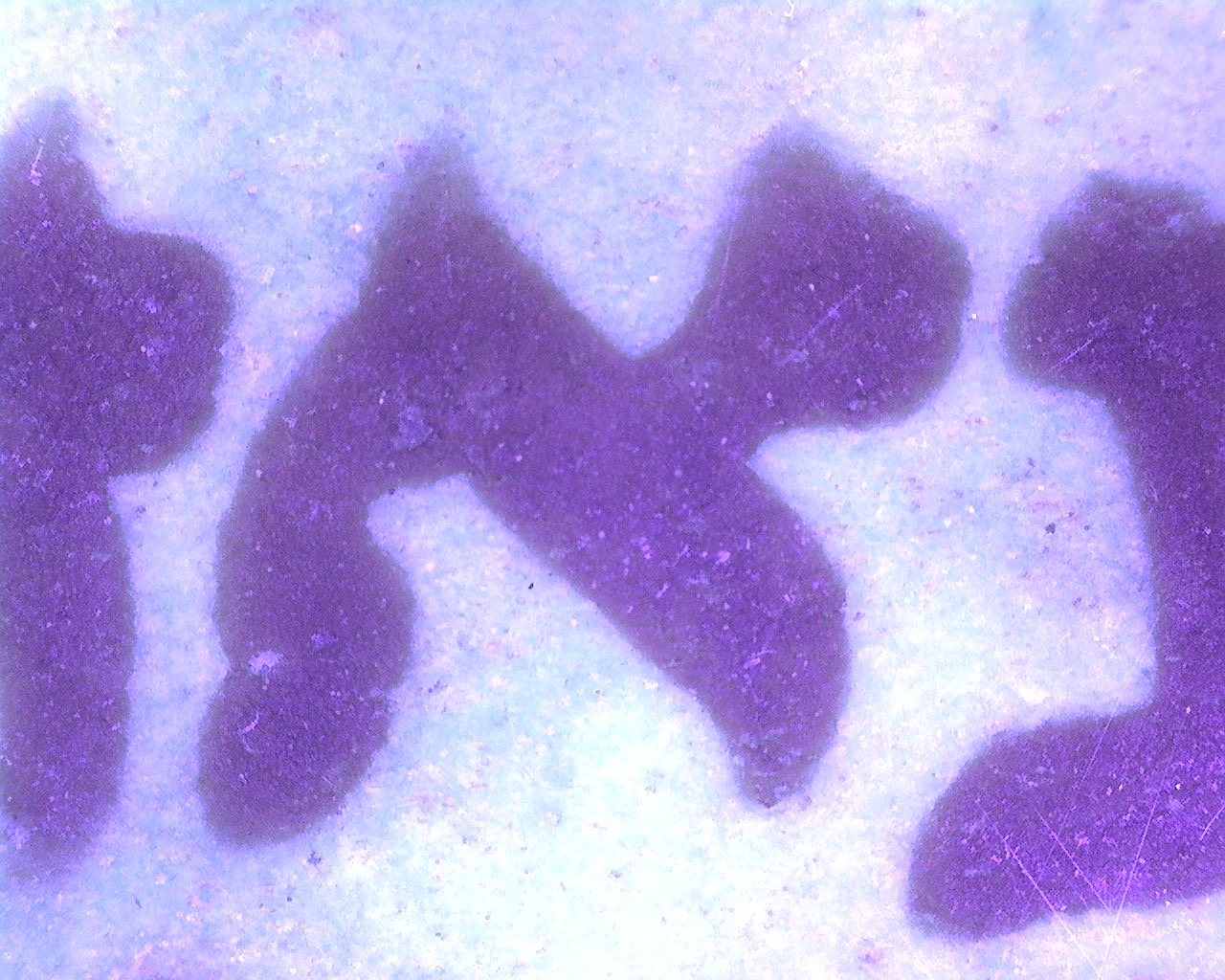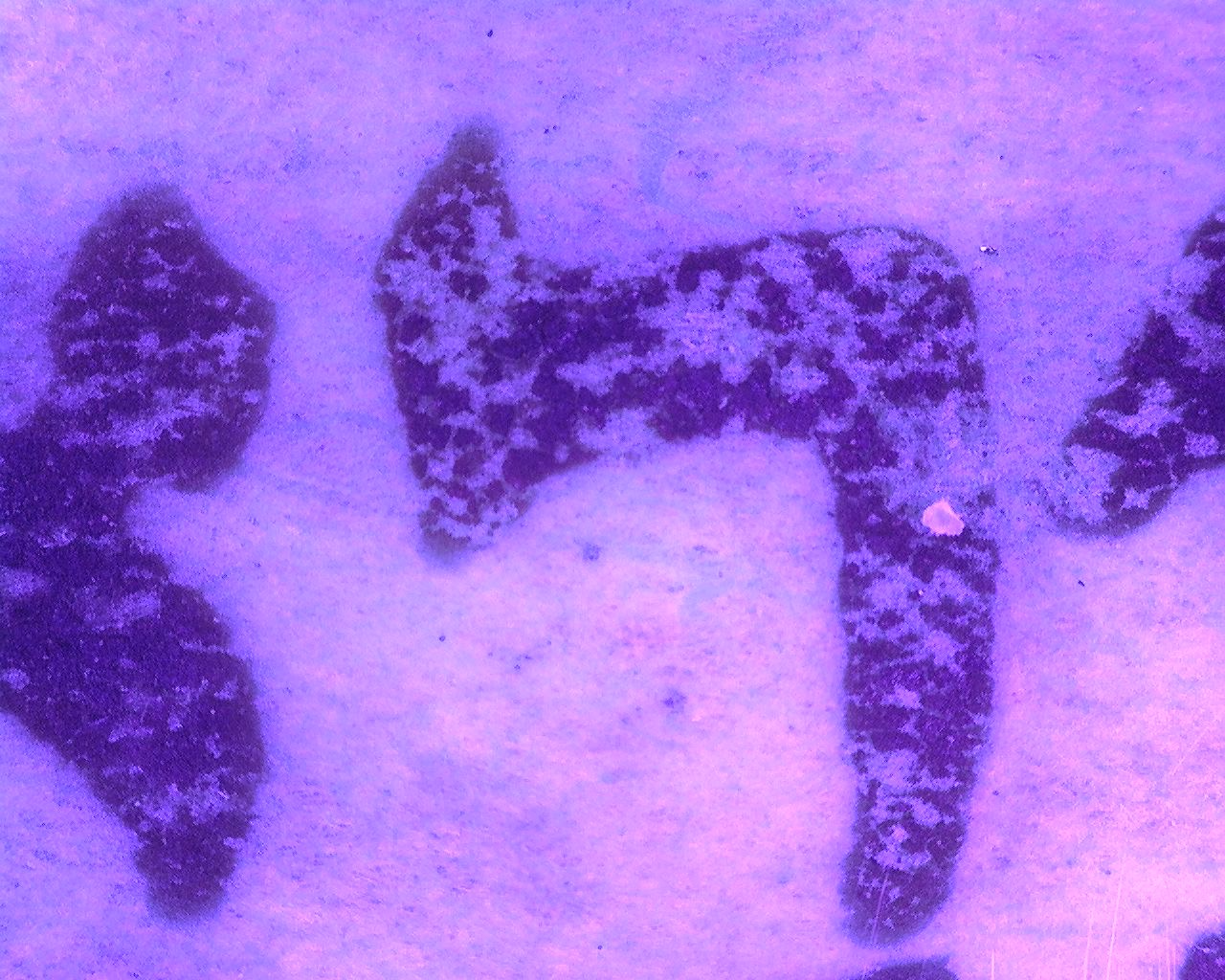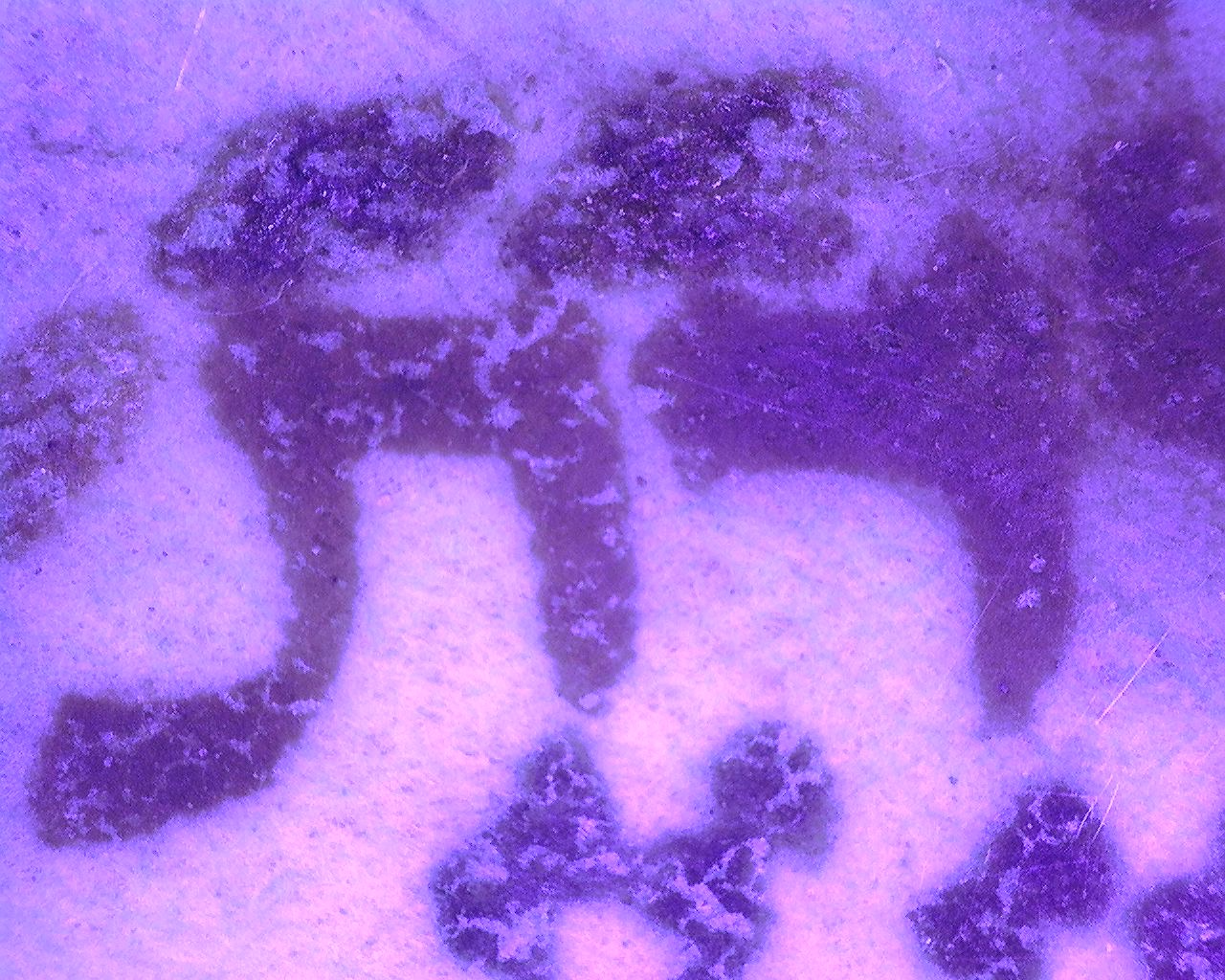by Estara J Arrant
The intellectually rich, culturally vibrant, and linguistically diverse world reflected in the Cairo Genizah fostered the translation of the Hebrew Bible into Arabic. Most well-known are the translation works of great intellectuals such as Sa‘adya Gaon and Yefet b. ‘Eli, who contributed to the clear understanding of the Hebrew Bible in an accessible Arabic language. However, ‘popular’ translations were also frequently written.[1] Such a translation of Ecclesiastes has recently been discovered in Cambridge’s Taylor-Schechter and Lewis-Gibson Genizah collections. Its rare and unique features open the windows into how an everyday translation of a biblical text looked and sounded in 12th century Egypt.
One of the three fragments found: T-S Ar.53.12. We are grateful to the Syndics of Cambridge University Library for the permission to use this image.
The passage of time and certain scribal practices have made today’s view of this medieval translation world anything but clear. Since the majority of Judaeo-Arabic manuscripts are written without vowels, we are often unable to fully reconstruct their language. Also, the famous translations of great intellectuals have overshadowed more ‘common’ Arabic translations in scholarly attention. Therefore, the manuscript discovered, which preserves someone’s unique personal translation of Ecclesiastes with all of the vowels included, is a particularly enlightening find. Using a combination of palaeographic, textual, and linguistic analysis, we presented an edition of the idiosyncratic text and assessed the specific Arabic dialect in which it was written.[2]
In order to situate the manuscript in place and time, we first analysed the layout of the codex and the scribe’s handwriting style. The page has a landscape format (reminiscent of some Kufic Qur‘āns[3]), and the text is a readable size, having only 11 lines per page. At the beginning of each Arabic verse there are Hebrew incipits in an unusually small script, serving to guide the reader through the text.
The handwriting is professional. The pen strokes which comprise each letter follow the same order as that of intricately calligraphic ‘Eastern’ Hebrew Bible manuscripts from the 10th and 11th centuries C.E., but the strokes are rounded and flow smoothly into each other – a later feature. The overall character is therefore that of a book-hand square Hebrew script from 12th century Egypt or Palestine. We used ultraviolet microscropic imaging in order to analyse the fine details of individual letters, and to assist in deciphering the Hebrew incipits, whose consonants and vowels were particularly small and damaged.
Because all of the manuscript’s consonantal Arabic has been furnished with vowels, specific phonological and dialectal features were retained in the spelling. These features complement the manuscript’s assessed palaeographic date, and further indicate that its language reflects an Egyptian/Central Arabic dialect. Some of the most interesting linguistic features are as follows:
Vowels
The Tiberian Hebrew vowel signs pataḥ, ḥireq, and qubbuṣ correspond to the Arabic vowels fatḥa, kasra, and ḍamma. The shewa sign has two realisations: a sukūn closing a syllable, or representing a short /a/ or a reduced /ə/ sound. Imāla (raising the /a/ and /ā/ to an /e/ or /i/) is frequently present, especially at the end of the words with a feminine ending, for example, אַלחִכְּמִה, al-ḥikmih, ‘wisdom’ (Ecc. 2:12). Where Classical Arabic would have the particle man (مَن, ‘who?’), the text is vocalised with a Tiberian ḥireq: min (מִן) – a known dialectal feature of both Egyptian and Levantine Arabic. Hypercorrections to a perceived Classical Arabic form appear to be present; for example, he sometimes marks tanwīn incorrectly (אַכְתְרַא, ’aktharan, for آكْثَر). The manuscript only marks where Classical Arabic has tanwīn alif by ending words with the unvocalised letter alef; otherwise, case is absent from the orthography. Occasionally, some very strange or irregular forms of Arabic nouns appear, for example, יְדְּאהּ yadāh ‘his hand’, which corresponds in the translation to the Hebrew בְּיָדוֹ (Ecc. 5:14).
Microscope images in ultraviolet light at around magnification x50 (from left to right): (1) image of an alef showing the clear stroke pattern and rounded style of the script; (2) the characteristic alef-lamed ligature; (3) magnification of a qof with some of the vowels present; (4) example of ink decay on a resh; (5) magnification of a small incipit with vowels: the lighter colour of the letters may indicate fading and damage as opposed to the darker vowels.
Consonants
Noteworthy spelling features include the definite article ال, which is always written fully even when the initial alif is expected to not appear in Classical Arabic orthography. Geminated letters which would take shadda in Arabic spelling are indicated with an inconsistent placement of the Hebrew sign dagesh. Most noteworthy is the use of the Hebrew letter gimel with and without dagesh (ג, גּ) to indicate two different letters. גּ (with dagesh) indicates ج, while ג (without dagesh) indicates غ. This may indicate that ج (gīm) was pronounced by this person as /g/ rather than /j/ – a known feature in Egyptian Arabic both today, and in the medieval period up to the 12th century.[4]
Translation
It appears that the goal of the translator was to capture in florid Arabic the general meaning, but not necessarily the specific form, of the Hebrew content. In many places the translation appears to not correspond clearly to the Hebrew meaning at all. Moreover, sporadic Aramaicisms occur. The most striking deviation appears in the gloss for the Hebrew וּרְעוּת רוַּח, ‘pursuit of wind’. The author writes instead the following: בֻּטלַאן לַאבֻּד אילא ‘vanity, nothing but the glimmer of dawn’ (Ecc. 2:12), and לבֻטְלַאן סְרִיעא אילא ‘the futility is hastening after the glimmer of dawn’ (Ecc. 2:26). We concluded that this word אילא, which always lacks vowels in the manuscript, is probably an Aramaic noun used idiomatically as similar to the Hebrew phrase אַיֶּלֶת הַשַּׁחַר, ‘the light of dawn’. He thereby captures the familiar sense of transience and futility with original imagery. Another example appears in the translation of the Hebrew phrase, ‘a time to be born’ (עֵת לַלֶדֶת), as פוּקְת לִלְבְּקַא, ‘a time to persist’. The two proper nouns in the manuscript are given standard Arabic names: Qoheleth is termed אַלגַּאמִע, al-Gāmi‘, ‘the Gatherer’, and ‘Jerusalem’ is given the Arabic name דַאר אַלסְלַם, dār al-salam, ‘house of peace.’
These fragments have provided a fascinating and valuable window into the author’s own language and personal understanding of Ecclesiastes. Most striking is the freedom the author felt to use his Arabic creatively to capture the meaning of the Hebrew without being limited to its specific form. By integrating codicology and linguistic analysis, we were able to paint the clearest picture possible of the manuscript’s origin in 12th c. Egypt and the scribe’s linguistic background of an Egyptian/Central Arabic dialect. Ultimately, this find represents the importance of the Genizah as a valuable source for Arabic Bible studies.
Estara Arrant is currently preparing for her viva voce on her PhD thesis, ‘A Codicological and Linguistic Typology of Common Torah Codices from the Cairo Genizah’ at the University of Cambridge. She researches in Semitic linguistics/philology, Jewish and Islamic codicology, and digital humanities. Her specialisations are in the language development of Semitic scriptural traditions in Hebrew, Arabic, and Aramaic, Cairo Genizah manuscripts, and in the application of data science methodology to philological enquiry.
Footnotes
[1] Vollandt, 2018, Translations as linguistic commentaries? On the exegetical dimension of early Bible translations into Judaeo-Arabic,” in I. Dayeh (ed.), Commentary Cultures: Technologies of Medieval Reading, Philological Encounters 3, 253–274.
[2] Posegay and Arrant, ‘Three Fragments of a Judaeo-Arabic Translation of Ecclesiastes with Full Tiberian Vocalisation’. Brill: IHIW, 2020.
[3] Beit-Arie 2020, Hebrew Codicology, p. 281. For an in-depth discussion on Islamic book formats and of landscape/oblong formats in early Qur‘āns, see Déroche, 2006. Islamic Codicology, 160-181, and p. 216, fn. 44.
[4] Connolly, 2019, ‘Revisiting the Question of Ğīm’, p. 165, 168-9.
Article Reference:
Posegay, Nick, and Estara J Arrant. 2020. “Three Fragments of a Judaeo-Arabic Translation of Ecclesiastes with Full Tiberian Vocalisation”, Intellectual History of the Islamicate World (2020): 1-38, doi: https://doi.org/10.1163/2212943X-bja10001.
Citations:
Beit-Arié, Malachi. 2020. Hebrew Codicology: Historical and Comparative Typology of Hebrew Medieval Codices based on the Documentation of the Extant Dated Manuscripts Using a Quantitative Approach. Preprint internet English version 0.4 (February 2020). Jerusalem: Israel Academy of Sciences and Humanities.
Connolly, Magdalen M., 2019. “Revisiting the Question of Ğīm from the Perspective of Judaeo-Arabic,” Journal of Semitic Studies 64/1, pp. 155–183.
Déroche, François. Islamic codicology: an introduction to the study of manuscripts in Arabic script. No. 102. Al-Furqān Islamic Heritage Foundation, 2006.
Ronny Vollandt, 2018, “Translations as linguistic commentaries? On the exegetical dimension of early Bible translations into Judaeo-Arabic,” in I. Dayeh (ed.), Commentary Cultures: Technologies of Medieval Reading, Philological Encounters 3, 253–274.







Leave a Reply